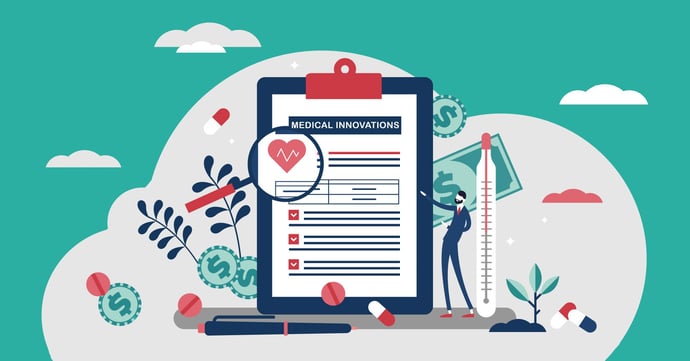From traditional reporting to the Value of Impacts: Novartis' Impact Valuation
Awareness is rising that traditional reporting fails to demonstrate what matters most to stakeholders: a company's social, environmental, and economic impact. Impact Valuation is the tool that enables the measurement and comparison of a company's impact holistically. This is the basis for sustainable decision-making – within and outside an organization. Since 2015, WifOR Institute has been helping Novartis drive their Impact Valuation forward. In this article, you will learn how WifOR enabled Novartis to be one of the forerunners in their field.
The Challenge
Today, an increasing number of stakeholders expect companies to create positive impact for the environment, society, and the economy. Yet, an agreed, standardized way of assessing impacts has not been established. Novartis is one of the forerunners in the field and started its SEE (Social, Environmental, Economic) Impact Valuation journey seven years ago. At that time, there was little awareness of the topic. For anyone not exposed to national income accounting and input-output modelling, which is commonly used by economists, the interpretation of input-output data was not straightforward. To explain the data to stakeholders was even more challenging. Employees, for example, had to be educated on the reliability of the data and how to use it. This resulted in a transition period moving away from traditional reporting practice (inputs-outputs) and into measuring the value of impacts. Transitions – especially when being a pioneer in the field without any blueprints for the process – are always challenging.
The Results
Novartis and WifOR have co-created a structured framework for impact assessment. The result of the SEE Impact Valuation framework represents Novartis’ continued, multi-year commitment to create value to all of its stakeholders. In particular, the monetized value of the social impact of medicines exceeded all expectations. It demonstrates to stakeholders, especially policy and political officials, the importance of health (including medicines) to the productivity of society and thus a country’s economy. The approach provides an opportunity to discuss the concept of “value” with Health Technology Assessment (HTA) bodies and payers and why it should take precedence over “price”. This new value dimension will be a potential game changer in future HTA discussions. It also helps initiate the paradigm shift from health as a cost to health as an investment and shows through data how better health creates wealth.
The Novartis country organizations use SEE Impact Valuation results in a variety of venues, including awareness-raising activities, press conferences, for stakeholder engagement, access negotiations, non-financial reporting, communication, and many others. For example, several countries have used social impact forecast analysis to support product registration, access, and reimbursement, further validating the health benefits demonstrated in the clinical trials; in another country, the government authorized Novartis to continue selling a range of products after demonstrating the company’s overall contribution to the country’s economy. In yet another country, economic impact forecast contributed to the country’s Vision 2030.

The power and scale of the data have shown that positive impact helps to remain focused on stakeholders. At the same time, these transparent and evidence-based dialogues are helping stakeholders understand Novartis’ societal impact and have started new and objective conversations between policymakers, associations, and companies. WifOR studies have influenced many countries and governments to the extent that impact valuation, and especially social impact data, are now made available for Novartis in more than 130 countries and serve as a basis for strong, differentiated policy advocacy with political bodies and academic institutions. As a result, Novartis is perceived as a reliable partner by stakeholders and the impact of its medicines is better understood and more widely recognized by patient organizations and the medical community.
Learn more about why Novartis is measuring its value to society through monetizing impacts in this video:
Implementation: Co-Creating Impact
Over the years, WifOR has increasingly supported Novartis in further developing existing approaches for Impact Valuation by different players, such as “Valuing Impact” or KPMG’s “True Value”. Today, Novartis’ social, environmental, and economic impact is calculated based on WifOR’s methodological approach for the social impact of medicines, direct GDP contribution as well as environmental and economic impacts. The key to success of this work has been its „co-creation“, i.e., the extensive collaboration between WifOR, Novartis, and other players. We have embarked on this journey with the common goal to add value to society. We have developed ideas, challenged, learned from, and taught, and motivated each other. Both WifOR and Novartis believe in the power of conviction through data, the importance of society’s health and wealth, and the improvement of the wider impact measurement and business landscape. As a result, our cooperation, and the number of joint studies has increased day-by-day.
Please refer to the below selection of studies conducted by WifOR for Novartis:
The future of non-financial reporting
To establish an agreed and standardized way of assessing impacts, there is yet still a long way to go. Over the next years, the future of reporting will be influenced primarily by stakeholder demand in financial markets and civil society. While several regulatory and harmonization initiatives were launched last year, the next five years will be marked by their development and enactment. Depending on their degree of stringency, technological means of tracking and reporting on supply chain actions will be impacted, as will the assessment of unstructured data for corporate reporting. Likewise, Big Data-based analytics for ESG investment assessments are gaining importance, and their stringency will in turn depend on the availability of comparable data provided through corporate reporting. Stakeholder demands are driving these developments and require a broader perspective on reporting practices to include both impact management and business interdependencies. The latter has the potential to lead to a more comprehensive view of business models.
